Peacock Feather Facts
- Only the males are called peacocks. And they are the ones who produce these exquisite feathers!
- The male’s feathers don’t start to change color until they are about 6 months old and they don’t start growing their fancy feathers until about the age of three.
- After each mating season, the peacocks lose their adornment and grow a new set! They don’t have to be killed for their beautiful feathers.
- Peacock tail feathers can grow to be about 6 feet long and will make up to 60% of their body weight.
- Their feathers are made up of microscopic crystal-like structures. How scientifically true!
- The brilliance and health of their feathers represent the health of their immune system, and a healthy male is attractive to the peahen.
- The peacock can live in the wild for up to 20 years!
- The peacock male spreads its feathers as an act of courtship to attract a mate.
You can find a lot of articles here on A Life of Heritage that will teach you a lot about poultry and be sure to check out CHICKEN RICH: Profitable Poultry Bundle–It’s FULL of to-do lists, checklists, record keeping sheets, and resource pages that will keep your flock healthy and YOU organized!
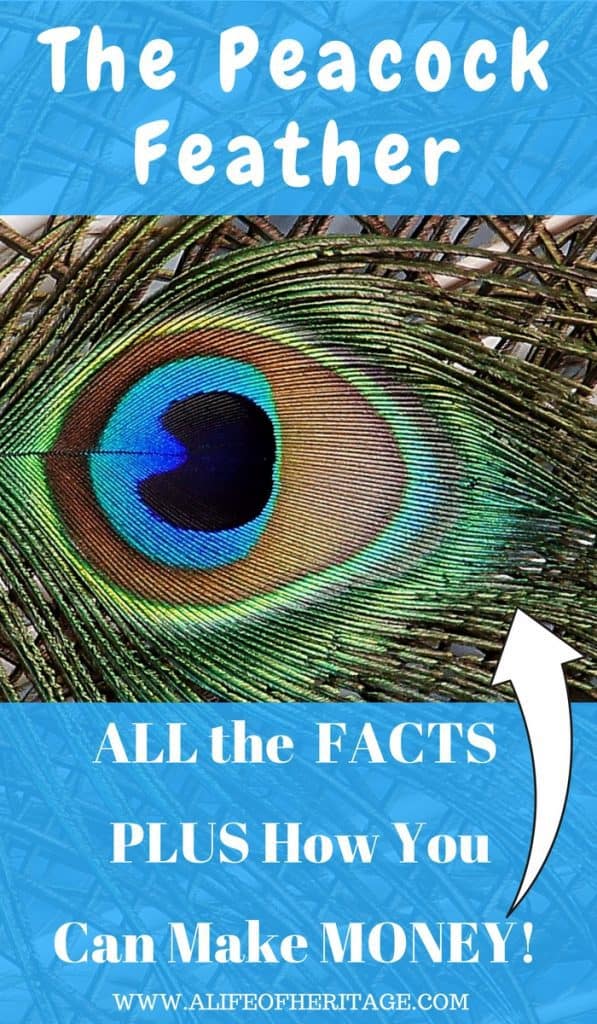
How to Care for and Store Peacock Feathers
Before you purchase your feathers and before we explore all the wonderful things you can make and decorate with these beautiful feathers, it’s so important to know how to care for and store the peacock feathers.
- Mite and Lice Removal. Using a handful of mothballs, place the feathers and the mothballs in an airtight container. Keep the feathers and mothballs in the container together for 24 hours. Please use care when using and storing mothballs. They are highly dangerous to humans and animals. Use a product like this with paradichlorobenzene: Moth Balls
- Kill Bacteria. It’s important to be on the safe side and kill any bacteria that may be residing in the feathers. Soak the feathers for half an hour to an hour in a mixture of 1/2 Isopropyl alcohol and 1/2 hydrogen peroxide. Don’t use bleach, this will cause the feathers to become brittle and will diminish the color. Hydrogen peroxide will brighten the feathers without making them brittle!
- Wash Feathers. Wash the feathers with a mild hand soap. Remove stains, gunk, and debris. This will also remove any remaining chemicals and oil on the feathers.
- Drying Methods:
- Lay Out to Dry. Lay them out flat, not piled up, in a warm, sunny location to dry. Dry them as quickly as possible to stop any mold from developing.
- Use a hairdryer: Gently dry the feather with a hairdryer but be very careful with this method! It is easy to burn the floaty ends of the feathers.
- Steamer: Using a handheld steaming device, gently steam the feather. Be careful with the heat on your hand, it is best to use an oven mitt on the hand holding the feather to protect it from the steam.
- Once the feather is dry it will fluff up beautifully!
- Natural Bug Repellent and Preserving Methods:
- Essential Oils are great natural bug repellents. When working with the feathers, put a light coat of essential oil on your hands. And put a soaked essential oilcloth in the feather storage box. Refresh the oil every so often.
- Citronella
- Cedar – either the wood or the oil.
- Eucalyptus
- Clove
- Patchouli
- Cinnamon
- Lavender.
- Neem Oil
- Essential Oils are great natural bug repellents. When working with the feathers, put a light coat of essential oil on your hands. And put a soaked essential oilcloth in the feather storage box. Refresh the oil every so often.
- Dust: Whenever dusting, dust the feathers with a microfiber cloth or feather duster.
- Wipe Clean: Every few months, gently clean the feathers with a damp cloth to remove the buildup of dust and dirt.
Curling Peacock Feathers
Curling peacock feathers and any feather is a cool way to spruce up a feather for a new look and it is very simple to do!
- Picture yourself curling ribbon with scissors for all the Christmas presents under the tree
- Separate a small section of the flue (The wispy strands that extend out of the main quill of a feather are called a flue.)
- Carefully, gently and with steady pressure, place a small section of the flue between your thumb and open scissors, and pull.
- You can do this on each section as many times as needed to get the desired look.
- Just be careful not to tear or fray the flue.
~Source (You can see awesome pictures of curled feathers.)
If you are interested in using peacock feathers to decorate…Explore away!
Peacock Feather Decorations: Home
Painted Canvas with Overlaid Peacock Feathers
Peacock Feathers: Arts and Crafts
Peacock Picture Frame Decoration
Peacock Feather: Vase Arrangements
Peacock Feather: Projects
DIY Crafts With Peacock Feathers
Horseshoe Dreamcatcher with Peacock Feathers
DIY Peacock Feather Hair Fastener
DIY Peacock Feather Halloween Costume
Wedding Invitation or Notecard Decor
OH! The ideas for making peacock feather crafts are endless! Explore More Ideas
Feal Peacock Feathers for Sale
Here are several places to get started when looking to buy peacock feathers:
Peacock Feather Meaning and Symbolism
Peacock symbolism: Vision, Royalty, Spirituality, Awakening, Guidance, Protection, & Watchfulness.
The symbolism of Peacocks and their Feathers Throughout History
- Greco-Roman Mythology: the “eyes” of the stars are seen in the peacock tail.
- Hinduism: the Peacock is associated with Lakshmi who represents patience, kindness, and luck.
- Persia: the Peacock is seen as a guardian to royalty, and is often seen in engravings upon their thrones.
- Christianity: the Peacock represents the “all-seeing” church. The Peacock also represents resurrection, renewal, and immortality within the spiritual teachings of Christianity. Themes of renewal are also linked to alchemical traditions too, as many schools of thought compare the resurrecting phoenix to the modern-day Peacock.
- Asian Spirituality: Kwan-yin (or Quan Yin) represents qualities like compassion, watchfulness, love, compassion, and goodwill.
- Buddhism: Purity. Their feathers are often used in Buddhist purification ceremonies.
- Eastern Europe: “Peacock feathers were worn by Mongol warriors, due to which in Eastern Europe, they are considered a symbol of bad luck. As a peacock is thought to be vigilant of everything, due to its multiple eyes, it is considered a symbol of bad luck, which is why it is never allowed inside a home. There is a superstition that a person sleeping on a bed that has peacock feathers on it will bring death to the sleeper.”
- Other Myths and Beliefs:
- Margaret Renner, a theologist, believes that the eye-studded feather of a peacock is an important object that wards off evil spirits.
- Believed to possess some medicinal properties.
- The Sinhalese of Sri Lanka believe that it can cure injured or damaged bones and poisonous snakebites.
- The Early Christians covered dead bodies with these feathers to prevent the decaying of the body.
- The Muslims used the quill of peacock feathers to write and mark passages in the Quran.
- The female peacocks are known to be very protective of their young ones, which is why many women get a peacock feather tattooed on themselves to symbolize this trait.
- One more myth states that the peacock is a slayer of serpents, and it can transform the venom of snakes into solar iridescence, which is seen in its feathers.
Raising Peacocks for Profit
It seems that a peacock can be kept for beauty and profit. Each year their feathers can be collected, cleaned, and sold. And beautiful decorations, gifts, and crafts can be made and sold as well. Here are a few ideas on where to sell the feathers and decorations:
- eBay
- Craigslist
- Local Craft Shops
- Fly Shops
- Craft Shows
- Etsy
- Facebook Groups
- Word of mouth
- Farmer’s Markets
When selling anything I have found it so important to really break it down into several steps and ask these very important questions:
Who, What, When, Where, and How?
In grade school, I probably rolled my eyes when we had to read a story and answer these questions. I mean, in a 10-year-olds mind: “what’s the poooiiint??” Right?
But now, older and wiser and all that, I see such a benefit to asking them when trying to sell an item.
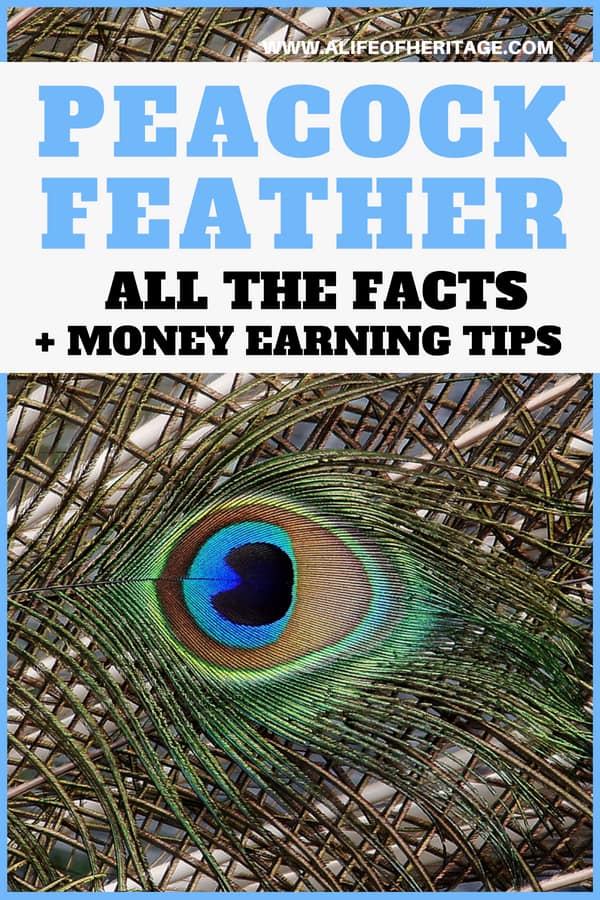
In this case, we are wanting to sell peacock feathers or decorations with peacock feathers in them. That answers the question “WHAT are we selling?”
WHO Are We Selling the feathers and decor to? We can get more insight into our customers by asking this question.
Who are the people that are interested in feathers and beautiful peacock-related decor and where can they be found? People who are crafty and make things for sale will be interested in peacock feathers.
And we will want to find people who love peacock decor or fancy and beautiful items to display in their homes.
WHERE do they hang out and how can their attention be caught to pay attention to your eggs and buy them?
Many times these type of people are found helping at or utilizing these wonderful options available in most communities:
- Farmer’s Markets are another place that art and decor can be displayed, especially if you already have a table full of fresh veggies to sell. Display the vegetables and the peacock art and feathers in a way that is beautiful, artsy and catches people’s attention.
- Sometimes local coffee shops, bookstores or specialty shops love to showcase local talent. They may be willing to display your peacock art or peacock feathers for sale. The profits are usually split, 60/40 being a normal starting place.
- Craft shows are another way to both sell peacock feathers to the other crafters and to showcase the items created with the feathers.
- eBay and other online auctions are another way to find buyers as well.
- Etsy is a great place to set up shop as well.
- Our local art center features local artists and allows them to sell their items there.
But there are also ways of attracting these people to us! With the right setup, people can begin to call you for information about your items for sale. Here are a few ideas:
- Word of Mouth (Don’t ever underestimate this!)
- Friends and Family
- Facebook Groups
When you’ve found the place or places you can sell your art and creations and feathers at or through, the fun begins!
And then we can begin to answer the question: HOW? How can we sell our items effectively and for the most profit?
The Poultry World brings up very good points that are often overlooked when selling our creations.
What usually attracts people to items, objects, or places?
It’s another series of questions learned in grade school:
See, Hear, Touch, Taste, and Smell. Our five senses.
And these can be utilized in helping you sell ANYTHING!
In any type of schooling, they have found that children (and people of all ages!) learn the best and respond the most when all senses are engaged. And this is also very helpful when attracting customers!
When setting up a stand at a craft show or, what can you do to make it LOOK pleasing and engaging? How can the background of the picture or product be set up to look more appealing and appetizing?
How can you add some SOUND from a CD by recording the sounds of a peacock or sounds of nature?
Is there a way to allow customers to FEEL the softness of the feathers?
When dealing with inanimate objects, it is hard to bring in the TASTE and SMELL of the objects. But don’t just give up on these senses. Maybe the light scent of the essential oils that were used on the feathers to keep the bugs and moths at bay, will be a wonderful touch to your product.
Sometimes making the beautiful item is the easy part, find the right customer and selling to them is a little harder. But you now have the ability and creativity to do it!
Peafowl are also raised for their eggs, meat and can also be sold as mature adults. So, if you decide to get a peacock, there are several options that are available on how to raise them for profit. But you can also just admire their beauty, collect the feathers to make beautiful decorations or just sell the feathers.
And if you don’t want to mess around with owning another bird, you can just buy some here: Peacock Natural Feathers
There are so many other ways that you can earn an income with fowl. Check these out: Chicken Rich
Learn more about Guinea Fowl.
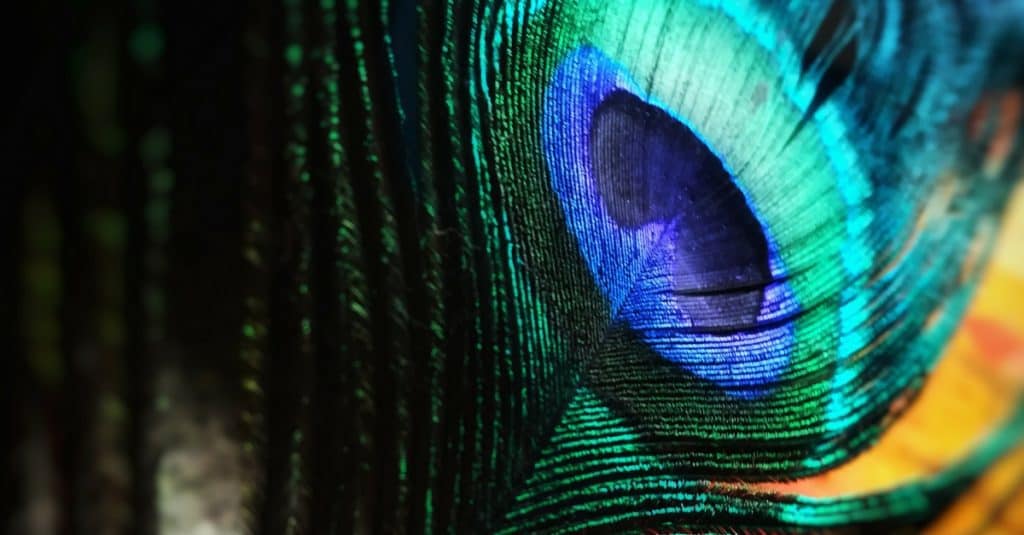
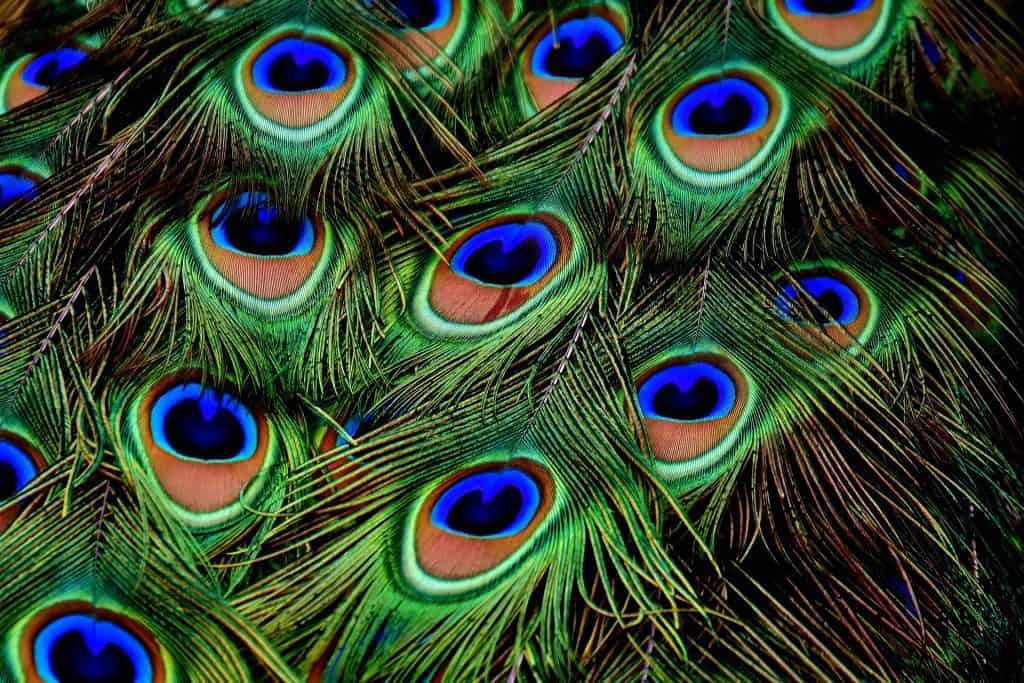
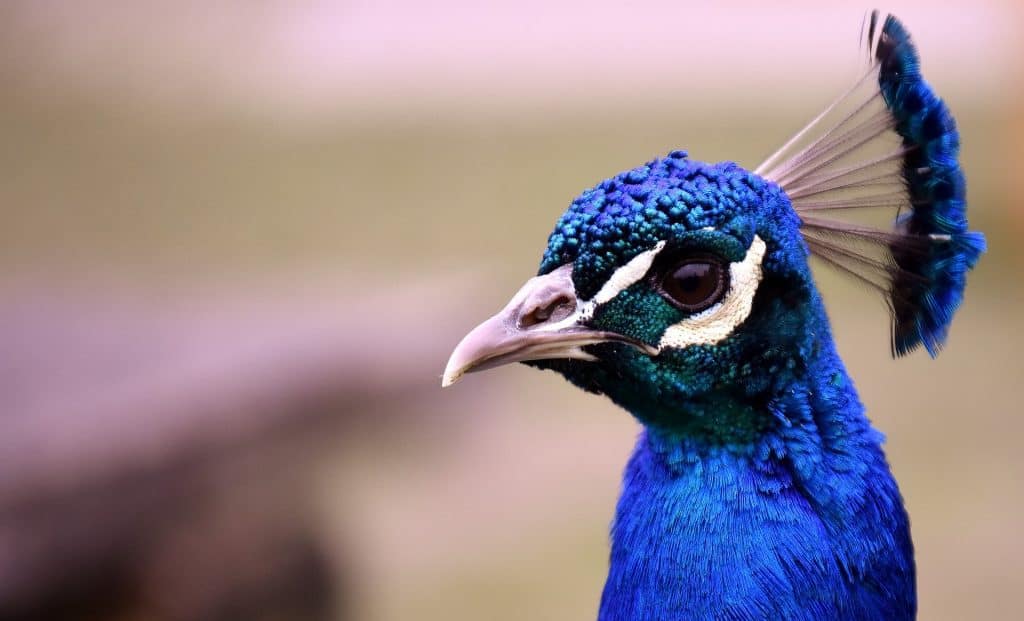
Hazel Kohler
Thursday 19th of August 2021
I have some peacock feathers that got broken, due to being badly packed for my house-move. Is it possible to repair them, and if so, how?
aniket dubey
Sunday 11th of November 2018
It was a very amazing article on Peacock. Peacock is one of the most beautiful birds and my favorite too. soo I have tried to find out some amazing facts about Peacock which you can see in this link www.mycoolfacts.com/2018/08/amazing-facts-about-peacock.html